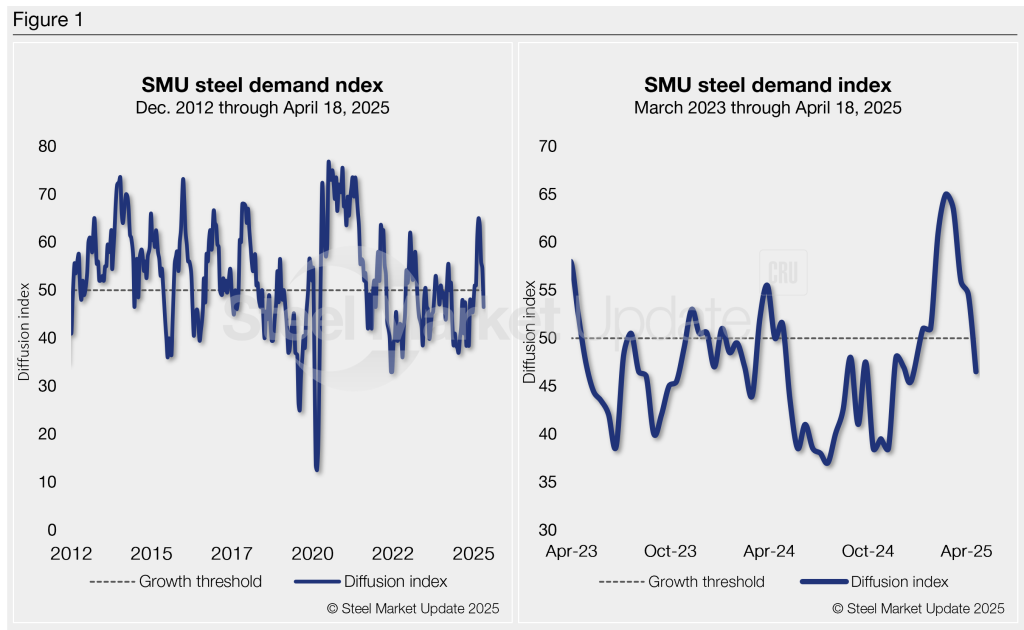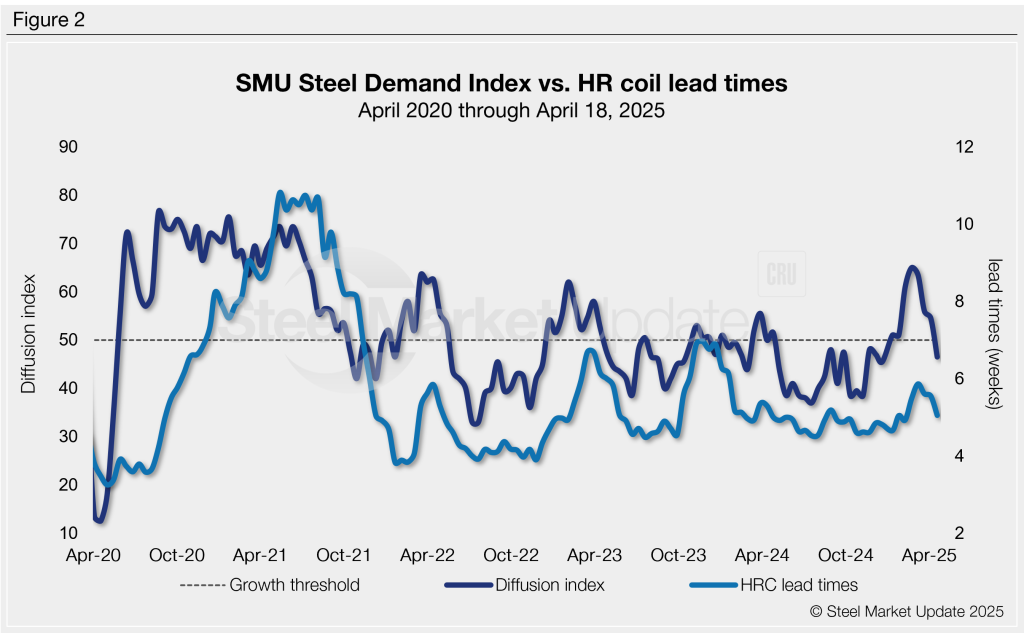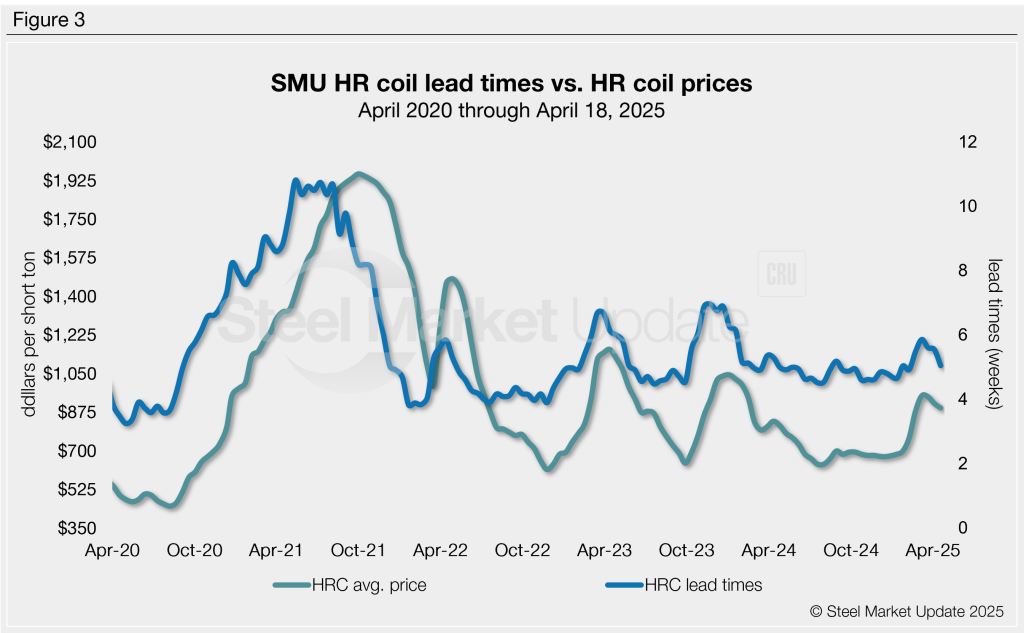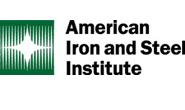Steel Products

SMU Steel Demand Index dips into contraction
Written by David Schollaert
April 23, 2025
SMU’s Steel Demand Index has moved into contraction, according to late April indicators. The slowdown comes in response to growing tariff uncertainty after the index reached a four-year high in late February.
Following moderate declines since the back half of March, the index fell last week, dropping out of expansion territory for the first time since mid-December.
The Steel Demand Index, compiled from our twice-monthly survey data, now stands at 46.5, down from 54.5 in early April and off from a four-year high of 65.0 in late February.
Momentum accelerated at the start of the year, driving growth. In February, mills began pushing higher prices, supported by tariffs. Once buyers covered near-term needs, concerns shifted to uncertainty around some of those same tariffs. Buying tailed off, and demand pulled back. The trend has been highlighted by declining prices and shorter lead times.
Methodology
Derived from the market surveys SMU conducts every two weeks, the index compares lead times and demand to create a diffusion index. This index has historically preceded lead times, which is notable given that lead times are often seen as a leading indicator of steel price moves. An index score above 50 indicates rising demand, and a score below 50 suggests declining demand.
Figure 1 shows the nearly 13-year history of the index on the left and provides a closer look at the Steel Demand Index readings of the past two years on the right.

Recent dynamics
Last year, demand slipped. Not all at once—just a slow, steady drop. Spot buying faltered and prices faded. The index sank into contraction and stayed there most of 2024.
There were moments—backed by a few sharp price hikes from mills—but they didn’t last. Gains were short-lived, and the index revealed underlying demand wasn’t strong enough to support steady growth. Large-volume buyers capitalized on discounted steel, but weak end-market demand prevailed.
Bye-bye Trump bump (for now)
Optimism rose as the new administration took over, and talk of a reworked Section 232 stirred the market. Demand responded in late 2024 and pushed into the first quarter of 2025.
Mills stood firm on pricing, and buyers rushed to get ahead. Mills stopped dealing. Lead times stretched.
And hot-rolled (HR) coil prices responded, rising by nearly $300 per short ton (st) in just about nine weeks. And lead times, which had been slipping and nearing 4.5 weeks, stretched out to nearly six weeks in early March.
But growing uncertainty on how it will all play out has shown a trend of declines.
HR coil prices have seen a similar trend, reaching $950 per short ton (st) in early March, but have since ticked down repeatedly—now averaging $895/st, according to SMU’s latest check of the market on Tuesday, April 22.
Lead times are now back to five weeks on average in our latest assessment on April 16, down from 5.9 weeks on average just six weeks ago.
For nearly a decade, SMU’s steel demand diffusion index has preceded moves in mill lead times (Figure 2), and SMU’s lead times have also been a leading indicator of flat-rolled steel prices, particularly for HRC (Figure 3).


Signals ahead
While demand remains steady and, in some sectors, still shows growth, the recent tariff-driven buying surge has passed. Most are now tightening their belt.
By all accounts, prices have peaked. The question now has turned to when they will bottom. While some mills are trying to keep prices firm, others have started to lower them—some more aggressively than others.
But all are reportedly willing to negotiate —a major shift from just a month ago when mills were unwilling to talk price.
Politics are on a swivel, and unsurprisingly, no one knows what it means yet. But maybe the slowdown in buying isn’t just that. Maybe it’s because lead times now reach into summer, when business always slows.
Recent survey data suggest the market has peaked for the time being, and now it’s a matter of minding the (slower) summer gap that’s been broadened by March’s forward buying frenzy.
But time will tell. Maybe tariffs stirred the shift. Maybe it’s just that inventories are in check, and summer’s slowdown is near.
Maybe it’s both. Either way, we’ll find out soon.
Editor’s note
Demand, lead times, and prices are based on the average data from manufacturers and steel service centers participating in SMU’s market trends analysis surveys. Our demand and lead times do not predict prices but are leading indicators of overall market dynamics and potential pricing dynamics. Look to your mill rep for actual lead times and prices.

David Schollaert
Read more from David SchollaertLatest in Steel Products

Nucor selects Fives Group for new galv line at CSI
Nucor Corp. has tapped Fives Group as its partner in designing and manufacturing the new continuous galvanizing line being added at its California Steel Industries (CSI) joint venture in Fontana, Calif.

AISI: Raw steel production levels off near six-month high
The volume of raw steel produced by US mills remained relatively flat last week, maintaining the rebound seen one week prior, according to the American Iron and Steel Institute (AISI). Previously at the second-highest rate of the year, production continues to hold at one the strongest levels recorded over the last six months.

Nucor keeps HRC price unchanged
Nucor has kept its weekly hot-rolled (HR) coil price flat this week, after a marginal cut the previous week.

SMU flat-rolled market survey results now available
SMU’s latest steel buyers market survey results are now available on our website to all premium members. After logging in at steelmarketupdate.com, visit the pricing and analysis tab and look under the “survey results” section for “latest survey results.” Past survey results are also available under that selection. If you need help accessing the survey results, or if […]
